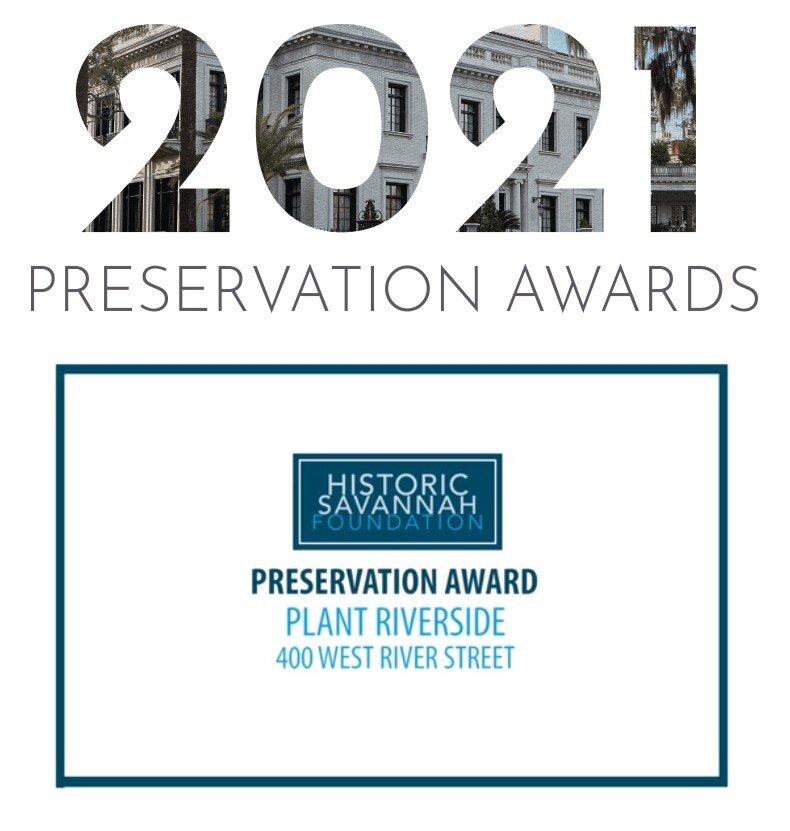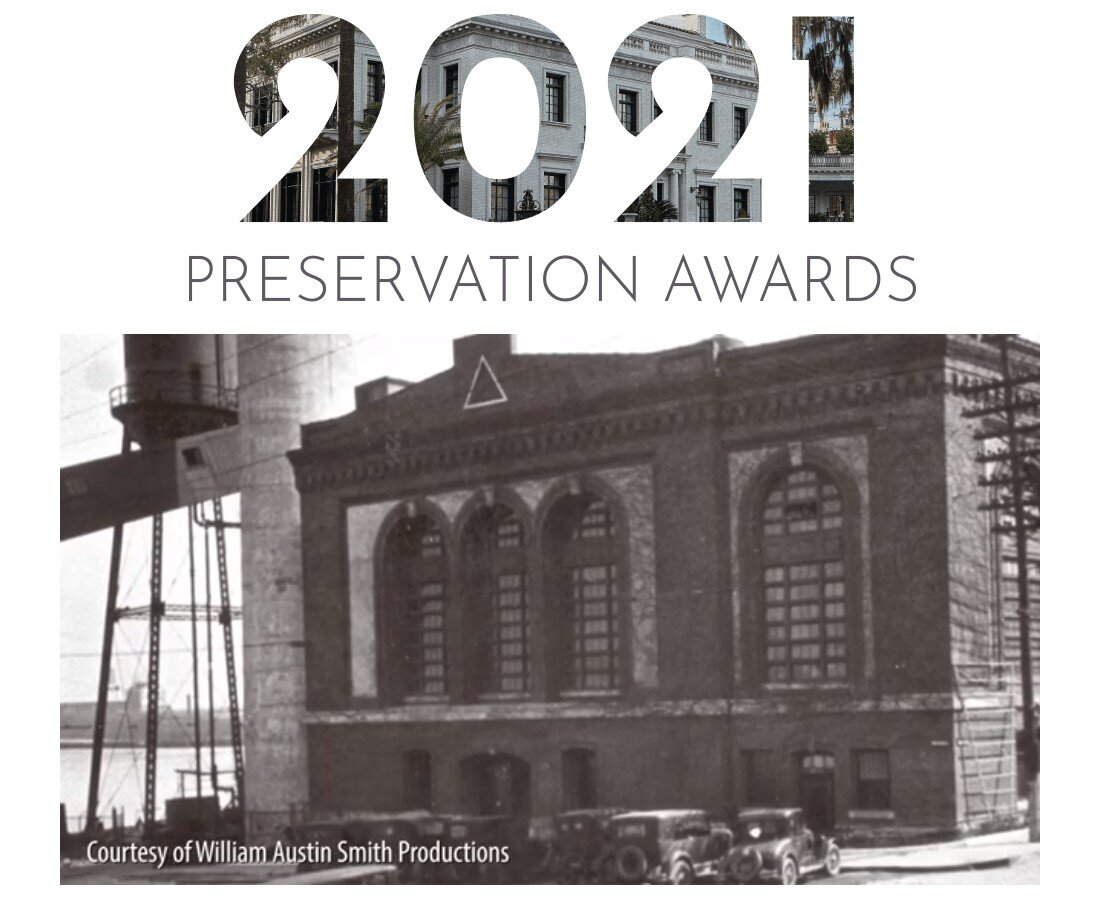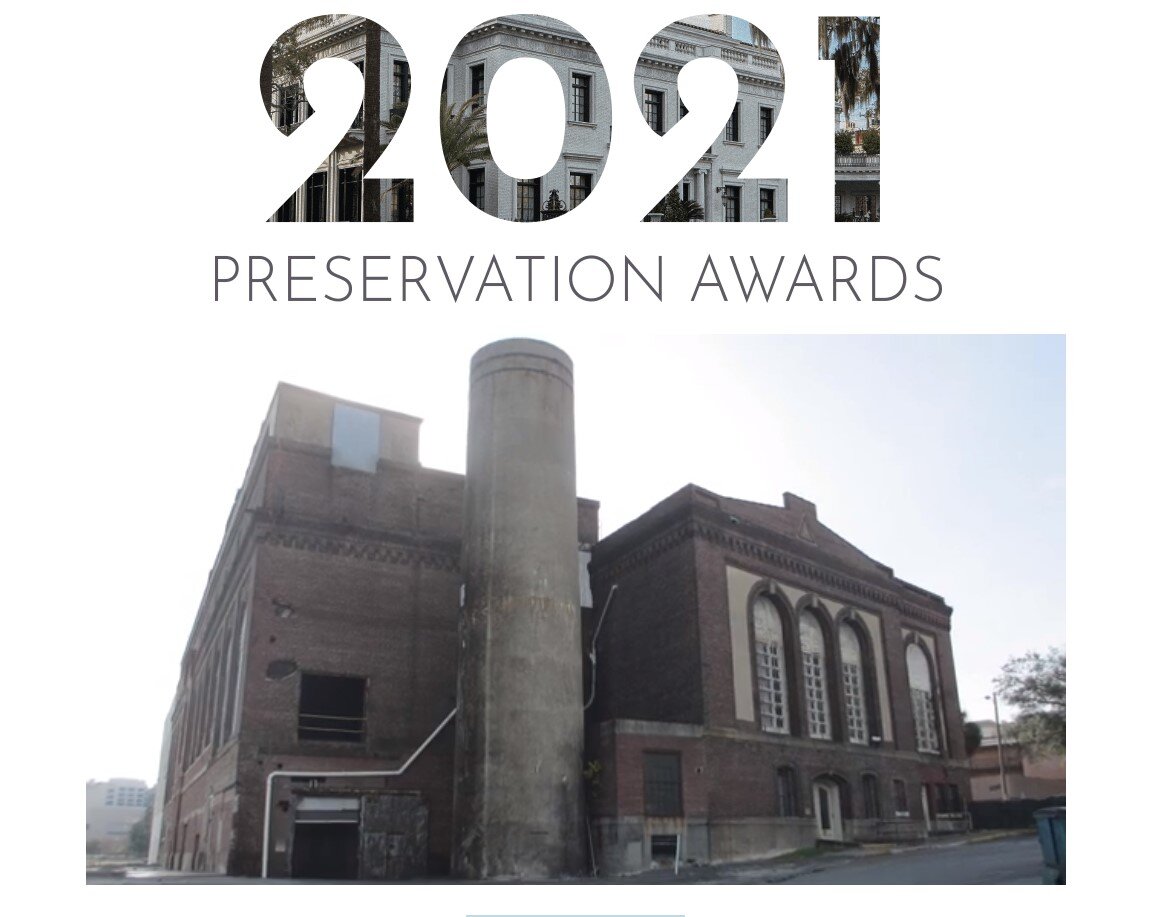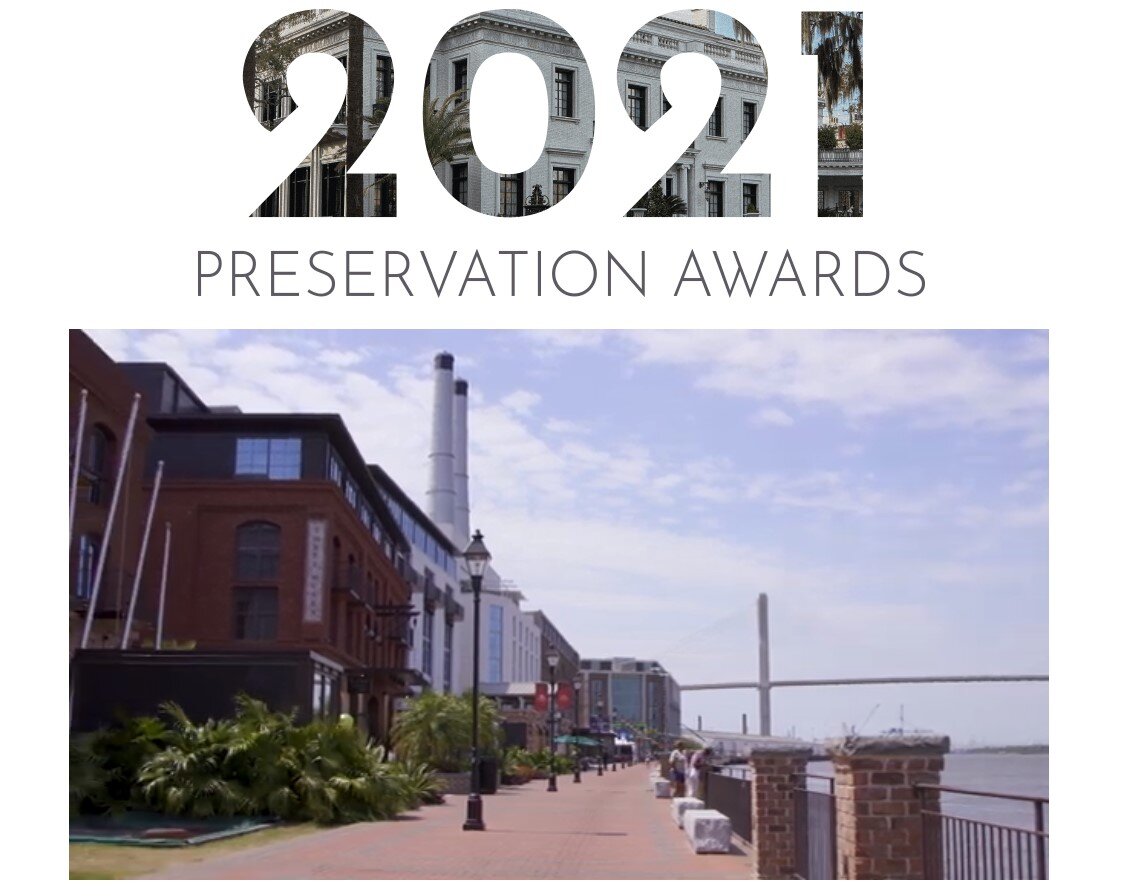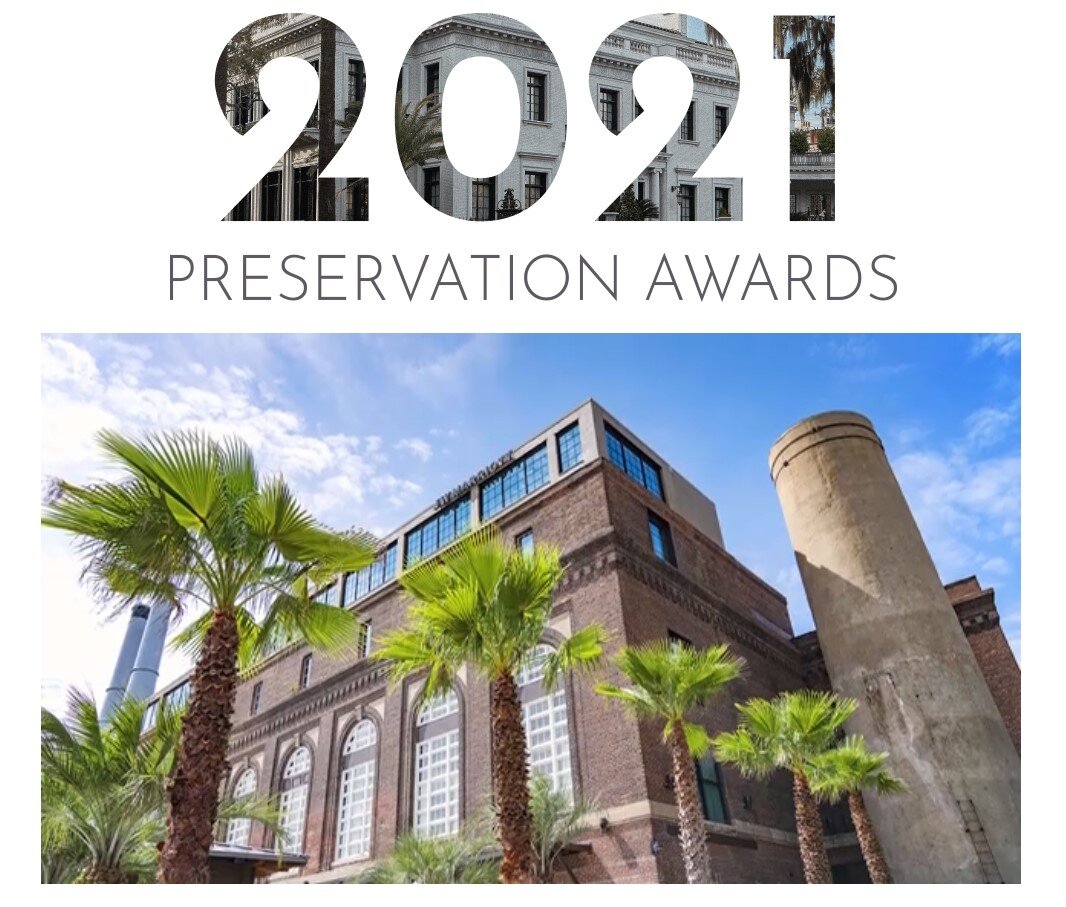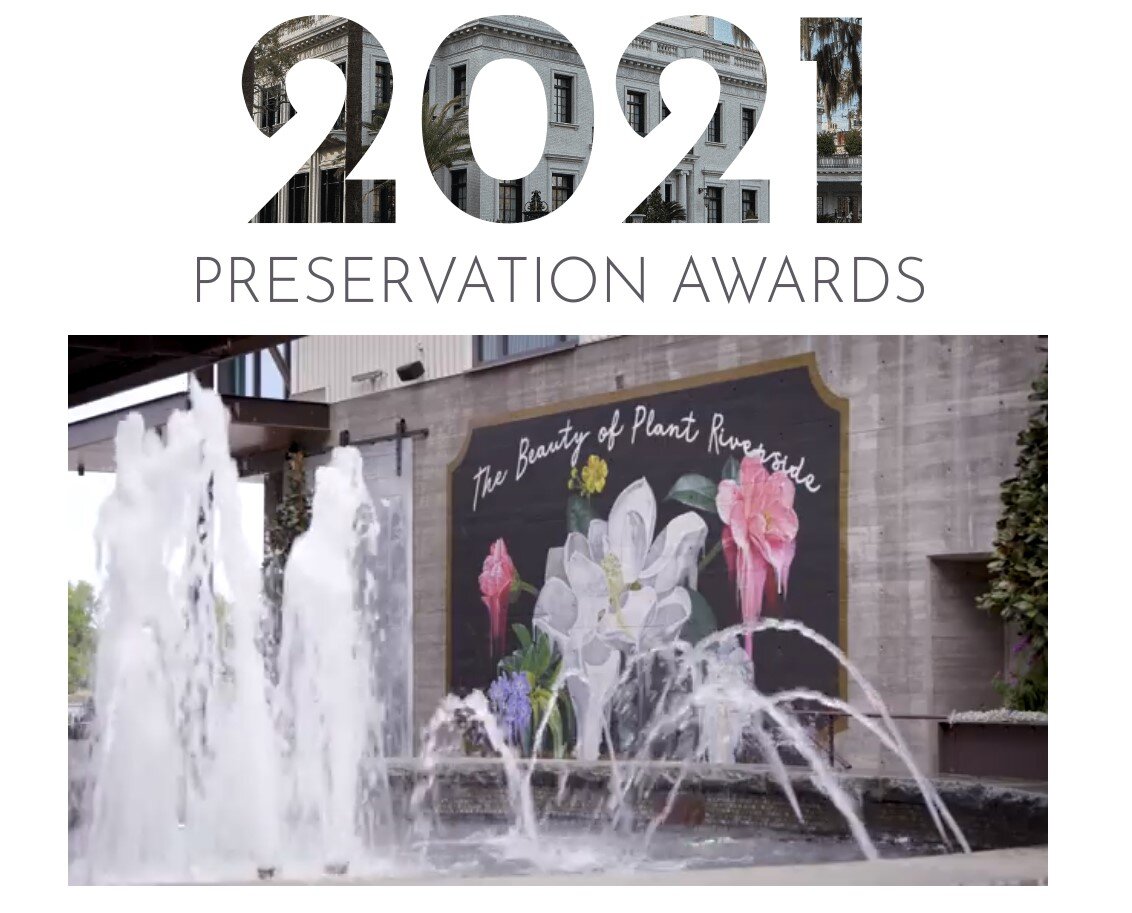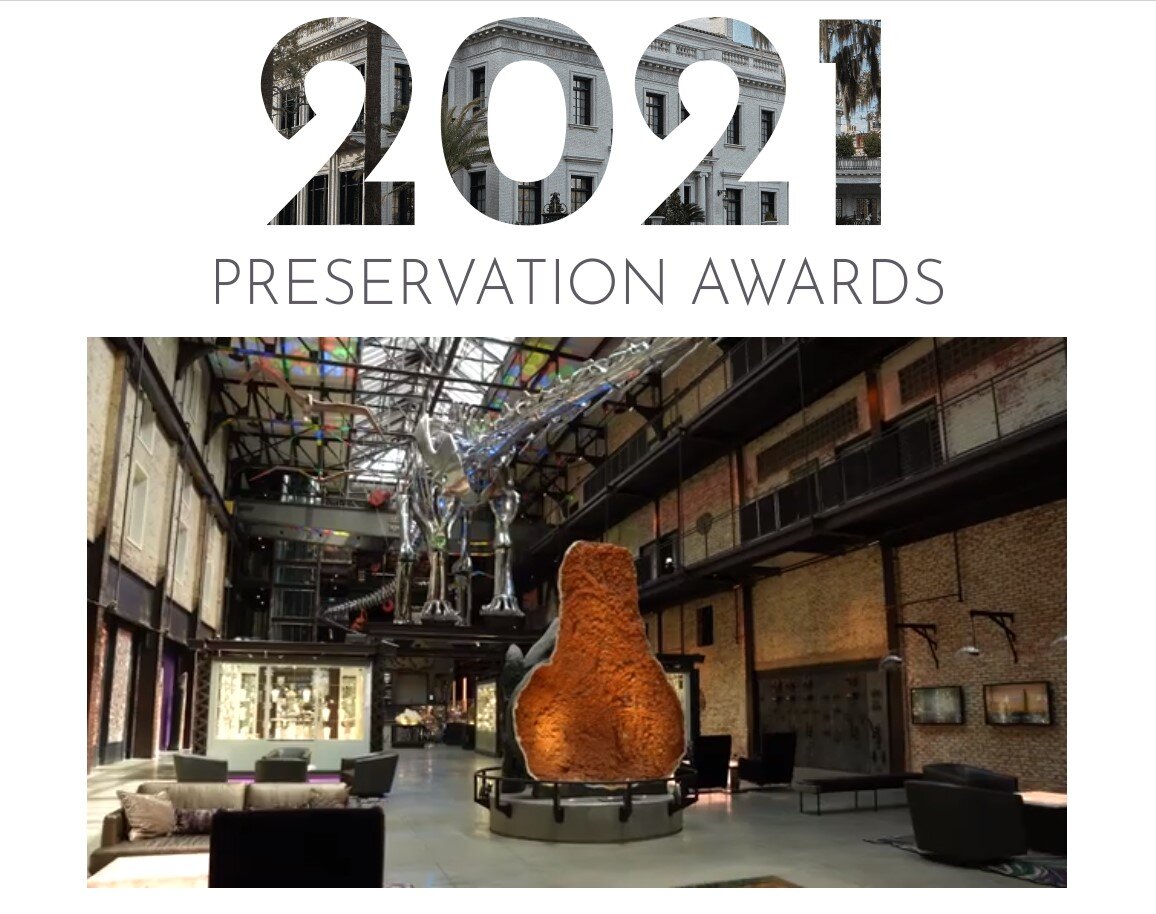Last night, Plant Riverside (400 West River Street) was recognized as a recipient of the 2021 Preservation Award by the Historic Savannah Foundation.
“Plant Riverside is a significant urban design and industrial rehabilitation project on the northwest corner of Savannah’s National Historic Landmark District that reestablishes key connections between the city and the river that have been lost for a hundred years.
The historic plant, the oldest portion of which was built in 1912, exemplifies the grand industrial architecture of the early 20th century. It is the centerpiece of the project. The large, coal-fired power plant was constructed in multiple phases between 1912 and 1953. The power plant site, decommissioned in 2005, created a significant barrier between the city’s oldest wards and their historic connection with the Savannah River. Adaptively rehabilitating the historic power plant was among the most ambitious aspects of the plan. This fascinating structure reflects half a century of construction, including the noble masonry industrial architecture of the early 20th century and transitioning into the steel frame and factory glass editions that followed into the 1950s.
While the architecture is compelling, the building was never designed for human habitation. Nonetheless, its grand interior has a cathedral-like quality and an intricate network of lace-like riveted ironwork. Adapting the building for a vibrant mix of museum exhibitions, restaurants, retail, and hospitality uses while retaining its essential character in grandeur was one of the greatest tasks of the eight-year-long rehabilitation effort. The historic power plant anchors the west end of River Street with its twin smokestacks as iconic landmarks within the Savannah skyline. The renovation strategy retained the structure’s historic character-defining features, including original masonry, details, fenestration, massing, and smokestacks. The structure continues to express its heritage as a power plant, while simultaneously introducing distinctly contemporary interior and exterior elements to adapt the building to its new purpose. These adaptations were carefully studied to preserve the power plant’s industrial character while expressing the creativity and vibrancy of its new uses.
All work was completed under the guidance of the Secretary of the Interior’s Standards for Rehabilitation, in collaboration with the state of Georgia Historic Preservation Office and the National Park Service. The project was granted historic preservation tax credits at both the state and national levels.
The project not only restores a landmark resource for Savannah, but it also reclaims nearly a quarter of a mile of the city’s lost waterfront for the public and reconnects the west of the city center back to the river. The project has also created 450 permanent new jobs to date in an area classified as under severe economic distress and has opened up the west end of the city’s riverfront, allowing natural urban growth and development on sites further to the west that would not have been considered for anything other than warehousing just a few years ago.
Project partners were: Christian Sottile (Sottile & Sottile), John T. Campo Jr. (John T. Campo & Associates), Clarence Vinson (PFVS Architecture), Diana Kessler (Kessler Collection Design Studio), Sam McEachern (Thomas & Hutton Engineering), and William Sewall (Hunt Construction).
The Plant Riverside projects resulted in the restoration and rehabilitation of an evolutionary site, creating a new kind of energy, integrating preservation and new design in the 21st century.”

